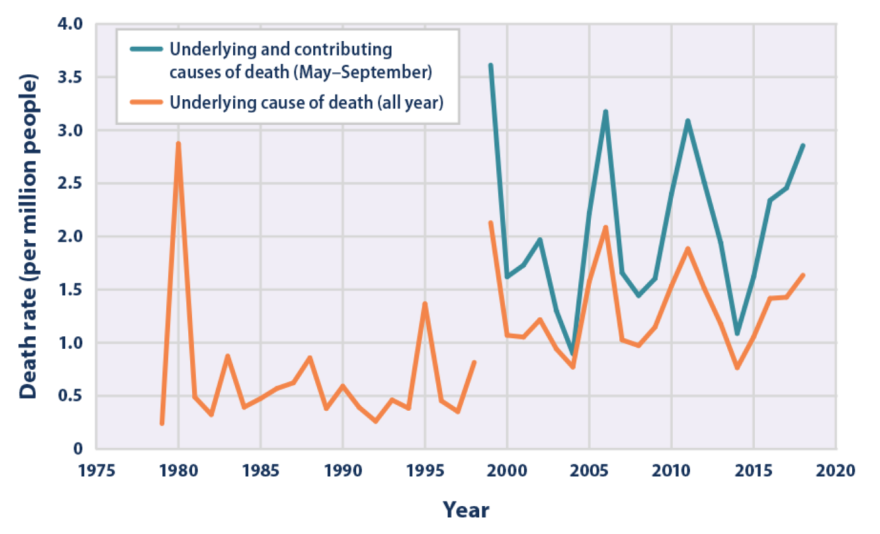Two years ago, the city of Fort Lauderdale was one of the first communities in the country to participate in the National Oceanic and Atmospheric Administration effort to map urban heat islands cropping up across the United States.
As climate change fuels rising temperatures, the islands are expected to worsen in dense cities where concrete has replaced trees and green space.
“There's that magic point, that NOAA identifies 103 [degrees] as a concern. That's when you start to get into the danger zone,” said Nancy Gassman, Fort Lauderdale's assistant public works director. “We are hitting that tipping point of heat index more often in South Florida.”
WLRN is here for you, even when life is unpredictable. Our journalists are continuing to work hard to keep you informed across South Florida. Please support this vital work. Become a WLRN member today. Thank you.
The mapping turned up areas of the city that were as much as 15 degrees hotter, which can make all the difference between a South Florida day that feels like 90 or a sizzling 105 degrees.
“Those days where you leave your windows open and get that ocean breeze 24 hours a day throughout the year,” said Gassman, “that's not not how it is anymore.”
Miami and West Palm Beach have also mapped islands in the last four years, joining Fort Lauderdale and eight other cities working with NOAA and a Portland State University researcher leading the effort. They want to identify the most vulnerable places to help prevent heat deaths.
While the number of deaths appears to be increasing among the elderly, calculating the true amount can be difficult, according to the Environmental Protection Agency. That’s in part because of the way deaths are classified, and whether heat is considered the main cause or a contributing factor.
However, as heat waves fueled by climate change are expected to rise, the agency warns deaths will also likely climb.

The NOAA project aims to understand the causes and impacts of heat islands to develop ways to fight the heat. That can include adding swales with trees and plants to widen boulevards or making cooler roofs.
“It's not limited to just public works. It includes how we organize, how do we develop our parks and how you do your urban planning,” said Gassman. “Trees are certainly one mitigating factor, but it's certainly more complicated than that.”
NOAA is now embarking on another round of mapping and looking for more cities and organizations to help organize volunteers.
For the project, NOAA needs teams of at least 15 people equipped with sensors that measure temperature and humidity to travel grids at different times of day. The volunteers can travel by car, stopping for just a few minutes to collect information.
In Fort Lauderdale, there were some unsurprising heat islands, like acres of concrete surrounding the airport. The study also revealed that while heat islands could form in both rich and poor neighborhoods — some beach neighborhoods got hot — poorer neighborhoods were less equipped to deal with the heat.
“What we saw was that those areas that are high in rental units do not have as much tree canopy,” she said.
NOAA is hoping to expand the mapping and has, for the first time, opened up the program to communities outside the U.S. Applications to participate are due Jan. 15. For more information, visit NOAA’s heat island mapping page found here.
You can read more stories like this one by signing up for our environment text letter. Just text “enviro news” to 786-677-0767 and we’ll send you a roundup of stories like this — and more — every Wednesday.




